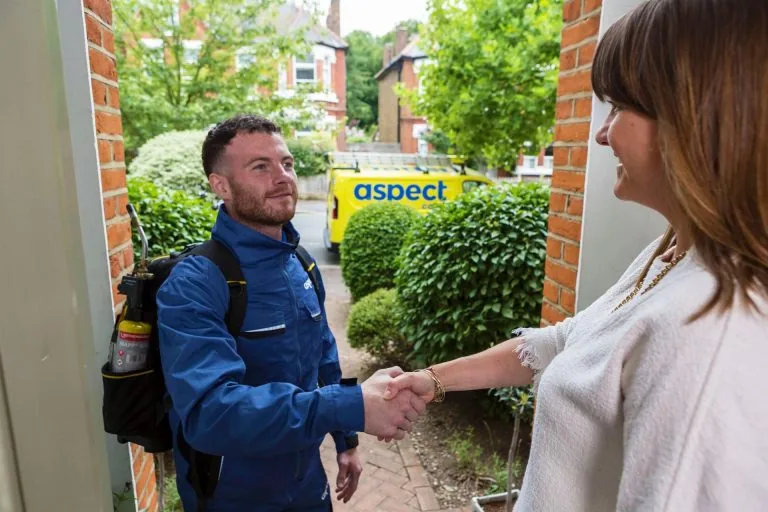How to unblock a toilet
Ever felt the panic of when you flush the toilet, and the water starts rising ominously close to the rim? Truthfully, it’s happened to most of us, as toilet blockages are a common household problem.
Our drainage experts have provided a comprehensive guide on how to unblock a toilet. The article walks you through the process of unblocking, from understanding the causes of a blocked toilet to exploring unblocking methods and knowing when to call a professional drainage engineer.

Understanding toilet blockages
Thinking about the potential source that’s causing a toilet blockage is necessary to determine how to unblock a toilet effectively. For example, putting items that are not flushable such as sanitary towels, wet wipes and too much toilet paper down the toilet is a different type of blockage to one caused by faulty or sagging pipework, or calcification on pipework due to a lack of maintenance.
You should also think about where the blockage might be located. If your toilet isn’t flushing properly, the blockage is likely to be in the pipework, usually in the U-bend, that needs to be pulled out or pushed through the system. However, if there’s water in the pipework behind the toilet, the blockage is most likely located further down the drainage network.
Whatever the case, if the blocked toilet isn’t addressed correctly from the get-go, it can lead to bigger problems that may be difficult or costly to solve later on. Based on observations, initial assumptions and uncomfortable conversations with the household about what’s been going down the toilet, you will hopefully have a greater understanding of the blockage. Plus, if you believe it to be near the toilet pan, it might even be a job that you want to try and tackle yourself.
Book a drainage engineer

We understand that a blocked toilet can be stressful. That’s why we aim to have a drainage engineer with you as soon as possible.
- Half-hour rates from £47.25 + VAT
- Priority attendance within 1 hour
- £10 off when you book online
- Fixed pricing for planned work
Identifying the type of blockage
Understanding the type of blocked toilet you have, or if an impending toilet blockage looms, is easy. Flush the toilet and check the fill level of the toilet bowl to pinpoint what kind of obstruction you’re dealing with. If there’s slow draining or limited water movement in the bowl, it can suggest that you have a partial blockage. Full stopping may occur when the water level in the toilet bowl rises and doesn’t drain away. This is a complete blockage.
If it’s a complete blockage, resist using extra flush pressure as this can lead to overflow. Relying on the weight of the water to clear the blockage is a risky strategy and can often lead to flooding on the floor. Instead, move any excess water out of the toilet bowl and into another container before disposing of it through another waste pipe. If your toilet connects with a cesspit or septic tank that appears to be overfilled, don’t take matters into your own hands – septic tanks should be handled by professional drainage engineers to prevent any messy scenarios.
Using a plunger to unblock a toilet
The reliable plunger with a retractable rubber flange in its suction cup is ideal for unblocking toilets caused by a build-up of tissue. To properly use a plunger, cover the bowl outlet tightly to prevent air or liquid from passing through before pushing down and up vigorously to create pressure and vacuum that could help to dislodge the excess paper inside the toilet. If this isn’t enough, simply fill the bowl again and repeat until the blockage is resolved.
If your clogged toilet has a Flexball Pan Connector, do not use a plunger. The pressure could cause the connector to burst off, which would be catastrophic. Being too forceful with the plunger can also damage connections on other types of toilet connector.
After using a plunger, add some bleach to the water of your toilet bowl and swirl the plunger around, followed by two repeat flushes to rinse the bacteria and germs away.
Using a plumbing snake
A plumbing snake, also known as a toilet auger or closet auger, is a tool used to clear solid toilet clogs and blockages in drains and pipes. It is a long and flexible metal cable with a corkscrew-like coil at one end and a handle at the other end. The coiled end is inserted into the drain or pipe until it reaches the blockage. The handle is then turned to rotate the coil, which helps to break up and dislodge the clog. Plumbing snakes come in different lengths and sizes, and can be used for different types of toilet clogs.
Typically, it’s the job of a professional drainage engineer to use a plumbing snake to clear clogged drain pipes. If used incorrectly, a plumbing snake can damage your pipes or even worse, cause injury by recoiling back on you.
Sani-snakes that are designed for sinks should not be used to unblock a toilet, as the metal tip can scratch the toilet and degrade the porcelain of your toilet bowl. Plus, toilets have a different design to sinks, so the sani-snake probably won’t reach the clog effectively. Also, there’s the wire coat hanger trick that’s often raised as a solution for unblocking toilets, where you bend a metal coat hanger into shape to reach a blockage. As with the sani-snake, a wire coat hanger might cause damage to your toilet bowl and as a makeshift solution, won’t necessarily reap the best results.
Chemical drain unblocking solutions
Various drain-unblocking solutions can be found down the cleaning aisle at the supermarket or as a hack on TikTok. Before we get into them, it’s important to note that they can cause harm to pipes and are not suitable for septic systems. Plus, they are ineffective if the blockage is caused by an object that’s made its way into the toilet by mistake.
Retail chemical drain cleaner
If the clog in your toilet is caused by excess tissue, products like Mr. Muscle and Drano can be viable solutions to break it down, but they come with drawbacks. Read Aspect knowledge article on using chemical drain unblockers for more information.
Baking soda and vinegar
Using a 50:50 solution of baking soda and vinegar in the drain for 30 minutes before flushing offers an eco-friendly alternative to chemical drain cleaners for unclogging a toilet. However, while it’s useful for dealing with cleaning, descaling residues or deodorising pipes that are polluted, its effectiveness is limited on difficult clogs.
Hot water and washing-up liquid
Hot water combined with washing-up liquid can dissolve partial clogs caused by excessive amounts of waste. The quantity of water in the bowl needs to be low beforehand, and additional liquid needs to be placed into a different container for appropriate disposal down an external drain. Putting washing up liquid down the toilet will act as a lubricant on its way out through plumbing pipes or drains. Then, by putting up to three litres of warm or hot water in the toilet bowl, you might see a sudden drop in the water level as the blockage is released. However, do not use boiling water down the toilet, as the porcelain can become damaged with prolonged exposure to boiling liquids.
Maintaining your toilet and pipes for the future
To avoid future blockages, good maintenance of your toilet and pipes is essential. Only use toilet paper down the toilet – flushing objects or materials such as baby wipes or sanitary products should be avoided to prevent blockages in the waste pipe. Items like these need to go in the bin instead of down the loo – even the ones that claim to be flushable!
In addition, regular cleaning of your toilet can help to stop any clogs from occurring. As a general rule, use minimal amounts of toilet paper and pour baking soda and white vinegar down the toilet now and then to clean the pipes. Taking precautionary measures will ultimately save you time (and money!) by avoiding costly repercussions resulting from blocked toilets later on.
When to call a professional drainage engineer
Learning how to unblock a toilet is helpful when there’s been a toilet paper overload, but if attempts to unclog the toilet have been unsuccessful, it’s always best to consult a professional drainage engineer. It’s important to enlist professional help if your sewage system is connected to either a septic tank or cesspit that appears full, too.
Plus, if you believe the blockage is caused by something other than typical waste, a drainage specialist can properly assess the issue and use appropriate tools to unblock the toilet. For example, our engineers have professional toilet augers with a 10-metre length for blockages located further down the pipework.
If learning how to unblock a toilet is causing you feelings of discomfort or unease, a professional will save you time, put your mind at rest and get your toilet back to functioning as it should.
Areas we cover

As a guide, we offer a comprehensive range of drainage services throughout Greater London and the South East of England. Our service area includes Bedfordshire, Berkshire, Buckinghamshire, East Sussex, Essex, Hampshire, Hertfordshire, Kent, Oxfordshire, Surrey, and West Sussex.
If you need our drainage services outside of this coverage area, we may still be able to help. Our scheduling team will check availability and see if an expert can be scheduled for your location.
Was this article helpful?
Think we could improve this article? Please let us know